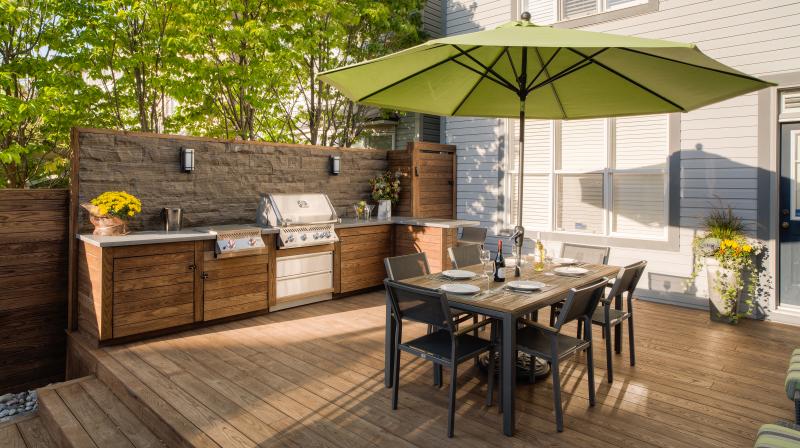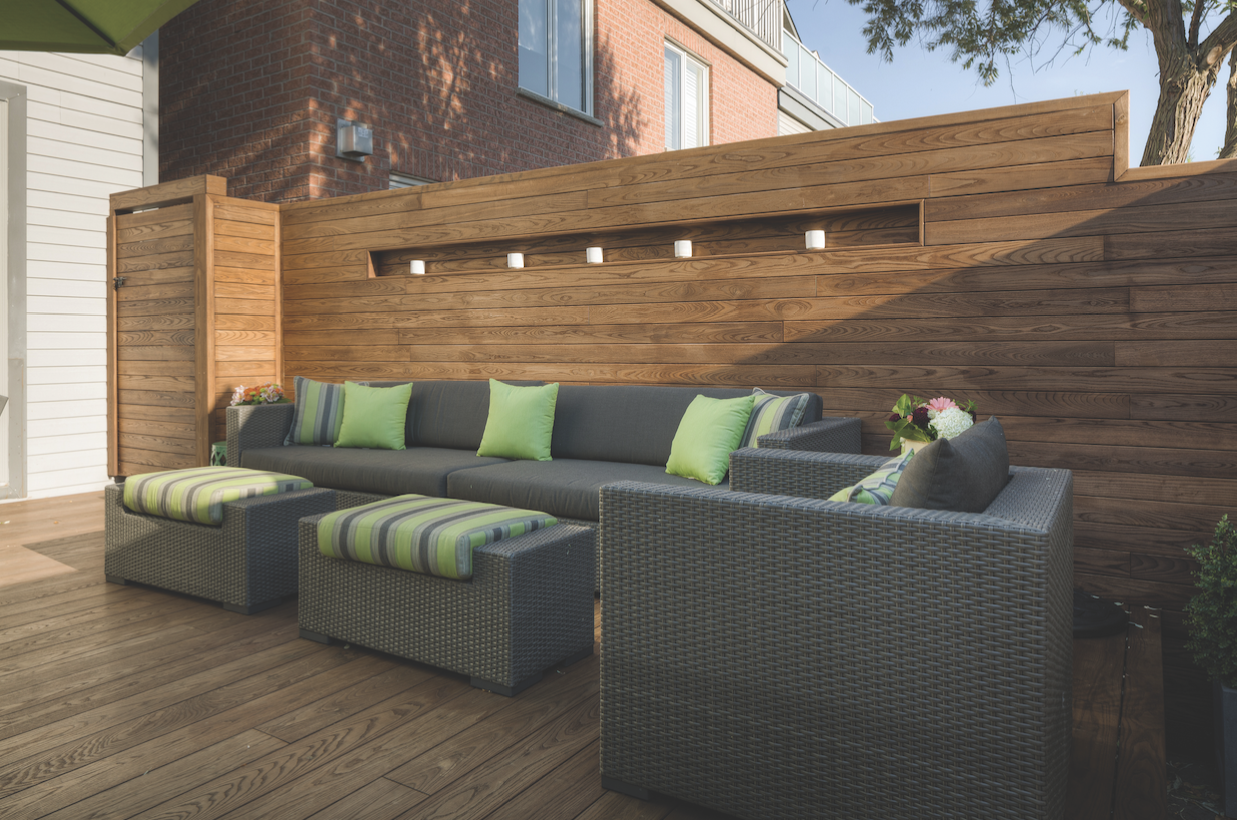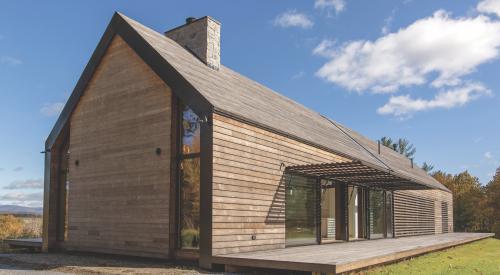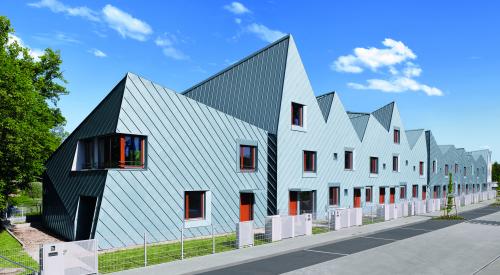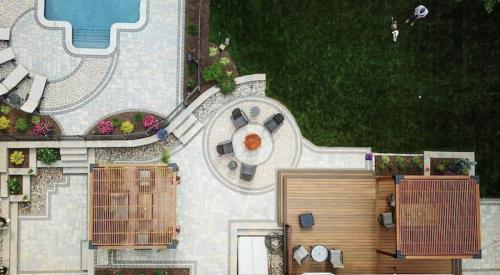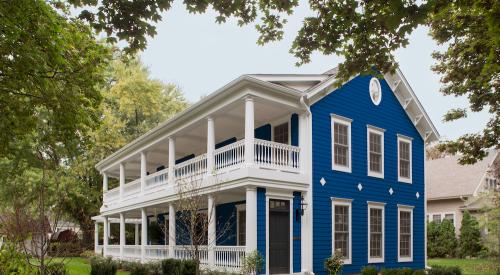Like most of the homes in its neighborhood, this Toronto residence has a small backyard (approximately 20 by 30 feet). Still, the owners desired a functional and beautiful outdoor oasis that they and their two young children could enjoy. Ted Hobson of Toronto-based Hobson Landscapes set out to maximize the existing yard space.
“[The clients] really wanted a deck that was level with the back door to make it an extension of the kitchen,” Hobson says. “They also wanted an outdoor kitchen and lounge area.”
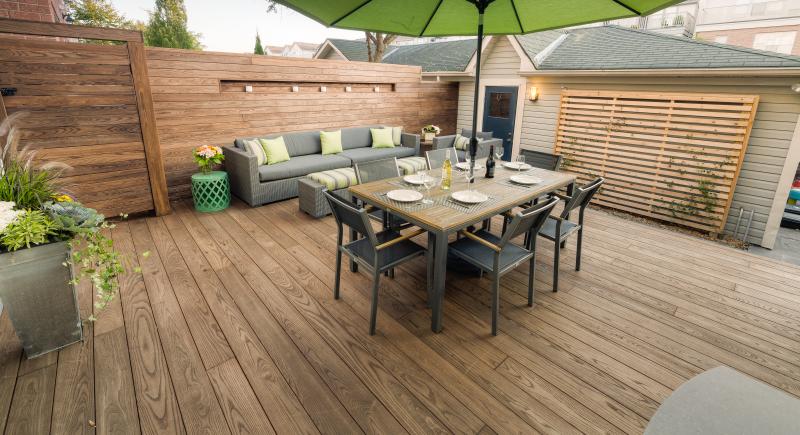
Using heat and steam, Thermory ash is altered to reduce moisture-related movement and increase rot resistance. Photo by Jeff McNeill/McNeill Photography
Hobson had been specifying ipe, a Brazilian hardwood, for fences and decking because of its natural look. “But I recently learned that ipe comes from old-growth trees, which I’m morally opposed to using,” he says. “Ash is more sustainable, with a 50-year life cycle as opposed to the 300-year cycle of an ipe tree.” After learning about Thermory ash from a supplier, Francis James of Weston Premium Woods in Brampton, Ontario, Hobson decided to give it a try.
James says thermally modified wood has been used for about 70 years in Scandinavia and for more than 15 years in Europe and Japan. It’s relatively new in North America, having been introduced in the United States six years ago and in Canada three years ago.
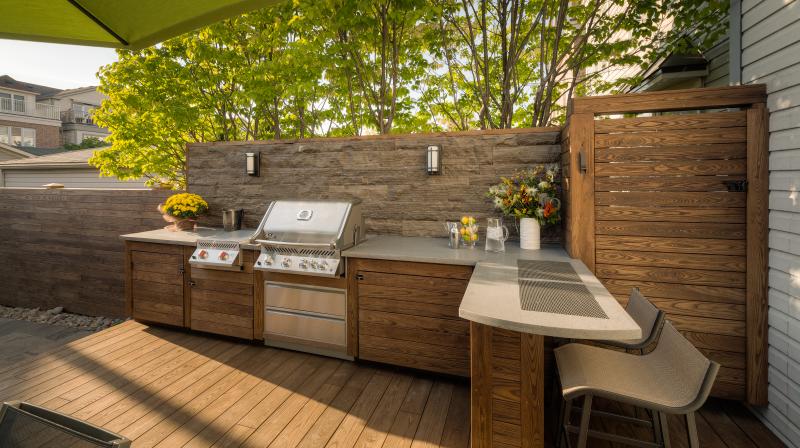
Thermory decking is made from North American white ash, a hardwood that’s similar to oak in hardness and is harvested from well-managed, sustainable forests. Using only heat and steam (no chemicals), the wood is heated to approximately 400 degrees F. According to Thermory, this process alters the cellular structure of the wood to reduce moisture-related movement and increases the rot resistance of the wood by reducing the sugar content that provides food for mold, fungus, and decay. It also changes the color of the wood to an exotic brown that ages gradually over time to consistent silver-gray tones.
James acknowledges that Thermory ash is not a low-cost option. “Our boards are often wider than composites and other hardwood options, and they have [an end-matched joint system] that allows for faster installation and less waste,” he says. “That saves about 5 percent on cutting. But when we’re talking price, it’s in the same range as high-end composites and hardwoods.”

To Hobson, however, Thermory ash offers a big increase in value.
“You don’t have to treat it periodically, though it will gray a bit,” he says. A standard UV protectant oil will preserve the wood’s darker tones, stabilize the wood, and reduce surface cracking. “If the [client’s] budget allowed, I would recommend Thermory ash again,” he says.
This story originally appeared in the Jan/Feb 2017 issue of PRODUCTS magazine. See the print version here.
